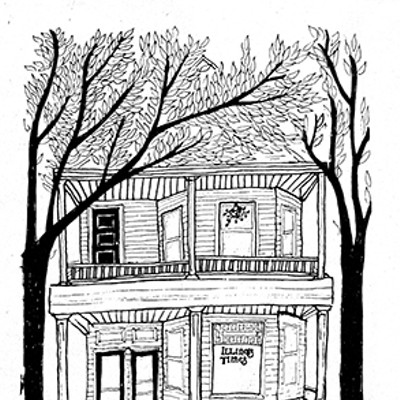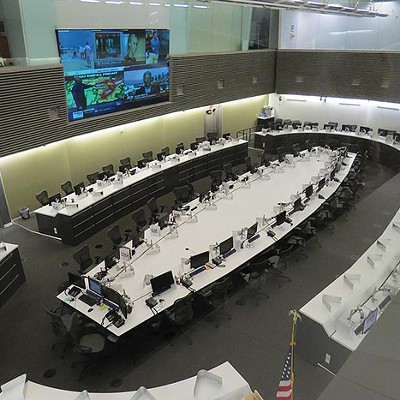
Ever know a kid who never quite grew up because her parents wouldn’t let her? The Y block in downtown Springfield is a lot like that. I described the partial clearing of that parcel in 1978. (See “A shooting,” Dec. 30, 2015.) I returned to the topic of its unrealized promise in 1981 in “People, not Pontiacs!” and fully expect to have to write about it again in 2031. The original has been edited for length.
Honestly, I didn’t know whether to cheer or to boo. On Sept. 30 the Illinois Supreme Court ordered that the State of Illinois’ petition to condemn the YWCA building at Fifth and Jackson in downtown Springfield be dismissed. The state wanted the Y’s land to make room for a courts complex first proposed back in 1975. But the court ruled that the state, which has already bought and leveled nearly an entire city block for the project, had already acquired an “excessive” amount of land. The Y would stand.
I was cheered by the ruling, but only partly because the court had reaffirmed the principle that public money may not be used by public agencies to condemn land without a proven public need for it. There were [other] principles at stake, and the Y did not hesitate to appropriate several of them in defense of their case, with the result that the agency came variously to be seen as a champion of women’s rights, historic preservation, voluntarism, community service and downtown Springfield.
It would take a writer of greater skill than I possess to cram into a few sentences the full measure of stupidity, arrogance and sheer numbskullery demonstrated by the sponsors of the courts complex. The initial concept sounded to me like the sort of thing that gets dreamed up by the boys in the locker room after racquetball: a sort of criminal justice laboratory, in which the Sangamon County circuit courts would be housed with state appellate courts and either a new law school or paralegal training center, all equipped with the latest in data processing gear. The broader purpose of the complex apparently was to learn ways to make justice quick as well as sure.
The notion made me nervous – I can think of no keener threat to the republic than an efficient judiciary – but it never mattered because the project was doomed from the start. [E]stablishing a new [law school] in the capital was bound to excite institutional jealousies among the state’s turf-conscious universities. . . . The gravest defect of all, however, was the assumption that Sangamon County would move its circuit courts into such a complex were one ever built. The county had built a new county building in 1966, and while the court facilities therein fail to meet the magisterial standards of the local bench, they are superior to those in most Illinois counties. . . .
The state had spent $3.3 million of the taxpayers’ money buying land for a courts complex which the county didn’t want and for which there was never a proven need, and it did so without getting so much as a solid “maybe” in advance from its principal tenant. In the process it leveled a movie house, an insurance office, a small factory, a drive-in bank (a nice irony, that, considering that the bank tore down a church to put up its drive-in), a rental haberdashery and a muscle salon. Most painfully of all, it also destroyed the vacant Abe Lincoln Hotel. The scars from these injuries were graveled over and the land converted into another of the state’s “temporary” parking lots – an act which simultaneously eroded Springfield’s tax base and created an eyesore in the heart of the city. The only consolation for distressed locals is that the governor, whose mansion sits across the street, has to look at the damned thing too.
Confronted with such a blunder, one’s first impulse is to look for somebody to lynch, or to vote out of office. But the principals are beyond the reach of legal retribution. Somebody owes us, however. I suggest that the state donate that land to the city for use as a public park, along with enough money to landscape and equip it – making it a place of rest for the strolling tourist, a lunch-hour refuge for the state worker, an oasis for the city dweller. Should the state fail to make this gesture of atonement to Springfield, I suggest a public campaign, modeled on the famous tea bag mailing of 1978. We should all mail a pebble to the governor with the plea that he convert that rocky feculence into something green and useful. Land for people, not Pontiacs! Greenery, not gravel! Think of it!
Contact James Krohe Jr. at [email protected].




















